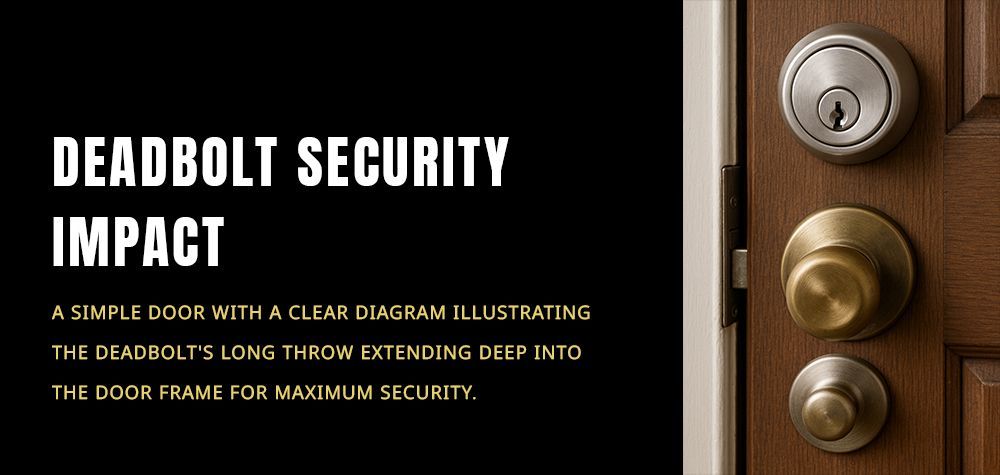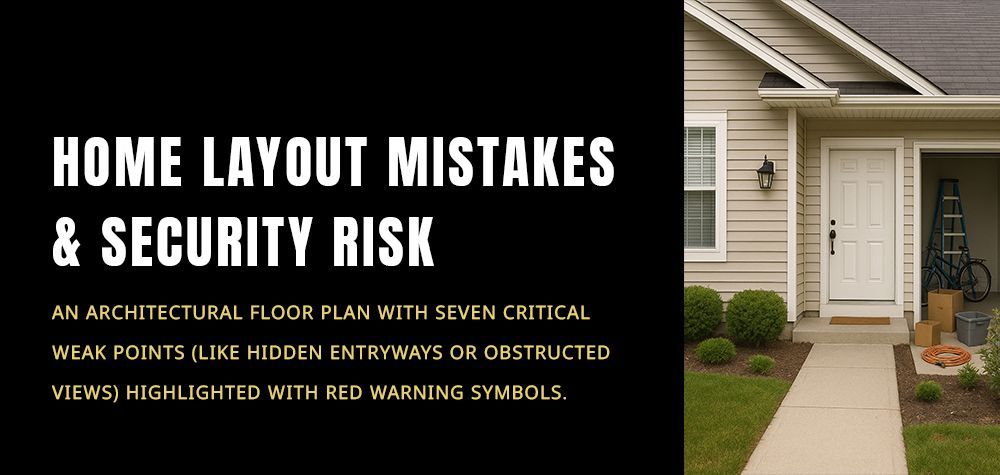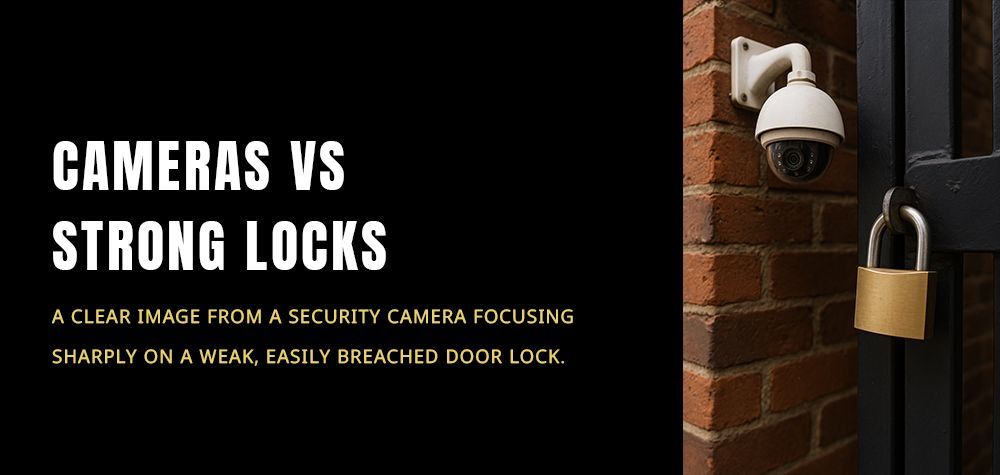How to Fix a Misaligned Deadbolt
A misaligned deadbolt can be a major annoyance, often making it difficult or impossible to lock and unlock your door properly. The problem usually stems from a slight shift in the door’s alignment due to factors like seasonal weather changes, wear and tear, or even the natural settling of your home over time. Fixing this issue may sound challenging, but it’s a process that can be broken down systematically. In this guide, we’ll walk you through understanding the root causes of a misaligned deadbolt, diagnosing the problem, and following specific steps to restore smooth, secure locking.
Can You Replace A Door Knob With A Deadbolt?
Understanding Why Your Deadbolt is Misaligned
Misalignment in a deadbolt happens when the bolt doesn’t line up correctly with the strike plate on the doorframe, preventing it from sliding smoothly into place. Seasonal temperature changes are a common culprit, as wood doors and frames can expand in humidity or contract in dryness, affecting alignment. Additionally, over time, heavy usage or slamming of the door can jar the lock mechanism, slowly shifting its original position. Sometimes, hinges on the door may loosen or sag, adding to the misalignment issue.
Diagnosing the Misalignment Issue
Before you start fixing the deadbolt, you’ll need to identify where the misalignment occurs. Start by closing the door and observing the alignment of the deadbolt as you attempt to lock it. Check whether the deadbolt seems to be hitting the strike plate slightly above, below, or to the side of the intended slot. You can also use a pencil to mark where the bolt contacts the strike plate—this will serve as a guide during the realignment process. Take a close look at the strike plate itself; if it’s worn or damaged, it may contribute to the issue. Also, examine the door hinges, as loose hinges can cause the door to sag and misalign with the frame.
Step 1: Tightening the Door Hinges
If you’ve noticed that the door is sagging, the first step is to check and tighten the door hinges. Over time, the screws that hold the hinges in place may loosen due to the door’s constant motion and the weight bearing down on the frame. Use a screwdriver to tighten each screw on the hinges, especially focusing on the upper hinge, which often takes the most weight. If the screws are stripped and won’t tighten properly, replace them with longer screws that reach further into the door frame for extra stability. A properly aligned door will reduce the misalignment of the deadbolt, often resolving the issue without further adjustments.
Step 2: Realigning the Strike Plate
If tightening the hinges doesn’t fully resolve the issue, the strike plate likely needs adjustment. Start by loosening the screws on the strike plate so you can shift it slightly to align with the deadbolt. Once the strike plate is loose, move it up or down to match the spot where the deadbolt hits the door frame. After adjusting it, tighten the screws to secure the strike plate in its new position. If the misalignment is minor, this step should help the deadbolt slide smoothly into the strike plate. However, if the deadbolt is still slightly off, you may need to remove some material from the strike plate opening.
In some cases, simply shifting the strike plate might not be enough, especially if the deadbolt is misaligned by more than a few millimeters. To fix this, use a metal file to enlarge the opening in the strike plate, allowing the deadbolt to slide in smoothly. Carefully file down the area where the deadbolt hits the plate, and test the lock periodically to avoid removing too much material.
Step 3: Repositioning the Deadbolt
If the strike plate adjustment doesn’t fully resolve the misalignment, the deadbolt mechanism itself may need repositioning. Begin by unscrewing the deadbolt from the door to expose the lock cylinder. Shift the deadbolt slightly up, down, or sideways as needed, following the alignment markings you made earlier. Once repositioned, retighten the screws, making sure the deadbolt sits snugly in place. Test the deadbolt to ensure it aligns correctly with the strike plate and operates smoothly.
Sometimes, adding a small shim behind the deadbolt assembly can help align it more precisely with the strike plate. Use thin cardboard or a metal shim to adjust the position subtly, giving you the right fit without causing any additional strain on the lock or door.
Step 4: Checking for Further Misalignment Issues
After adjusting the deadbolt and strike plate, test the door by locking and unlocking it several times. If the deadbolt slides smoothly and locks securely, the alignment issue is likely resolved. However, if there’s still resistance or difficulty, inspect other potential issues, such as warping of the door or frame. Occasionally, extreme weather conditions can cause temporary misalignments, in which case seasonal adjustments may be necessary. For instance, you may find the deadbolt working well in summer but sticking in winter due to wood expansion. Regular lubrication of the deadbolt and strike plate can also help in maintaining smooth function throughout the year.
Regular Maintenance Tips for Preventing Misalignment
Keeping your deadbolt in good working order is key to avoiding future misalignment issues. First, make a habit of checking and tightening door hinges every few months, as even slight loosening can eventually lead to sagging.
Additionally, keep the deadbolt mechanism clean and lubricated; applying a graphite-based lubricant or a silicone spray on the bolt will prevent sticking and reduce wear. Avoid using oil-based lubricants, as these can attract dust and debris, which may cause the deadbolt to jam over time. If your door is exposed to extreme weather, consider adding a door sweep or weather stripping to protect it from excessive moisture and temperature changes, which can impact both the door and frame.
| Issue | Cause | Solution |
|---|---|---|
| Door Sagging | Loose or worn hinges | Tighten screws on door hinges; replace with longer screws if needed |
| Strike Plate Misalignment | Strike plate shifted | Loosen strike plate screws, adjust position, and tighten |
| Incorrect Bolt Position | Deadbolt misaligned in the door | Reposition deadbolt; add a shim if necessary |
| Seasonal Wood Expansion | Changes in humidity or temperature | Adjust strike plate or deadbolt as needed; consider filing the strike plate opening |
| Dust or Debris in Lock | Buildup inside deadbolt mechanism | Clean and lubricate deadbolt with graphite-based lubricant |
| Warped Door or Frame | Prolonged exposure to moisture or weather | Install door sweeps or weather stripping to protect from further warping |
FAQs
Why does my deadbolt keep getting stuck?
Misalignment, dust, and debris inside the lock, or seasonal changes causing expansion and contraction of the door and frame are common causes of a stuck deadbolt. Regular maintenance and seasonal adjustments can help.
Can I fix a misaligned deadbolt myself, or do I need a locksmith?
If you’re comfortable using basic tools, many misalignment issues can be resolved at home. However, if you’re dealing with extensive warping or a complex lock system, a locksmith can provide professional alignment services.
How often should I check my deadbolt for alignment issues?
Checking your deadbolt every few months and after any seasonal weather changes can help prevent misalignment issues from building up over time.
Conclusion
A misaligned deadbolt can be frustrating, but with careful diagnosis and a few simple adjustments, you can often fix the issue yourself. Regular maintenance—like tightening door hinges, keeping the lock mechanism clean, and adjusting for seasonal changes—can prevent future alignment issues and prolong the life of your deadbolt. If you encounter more serious alignment problems or prefer professional assistance, Brothers Locksmith provides skilled locksmith services to ensure your deadbolt operates smoothly and securely
Call Us Any Time!






